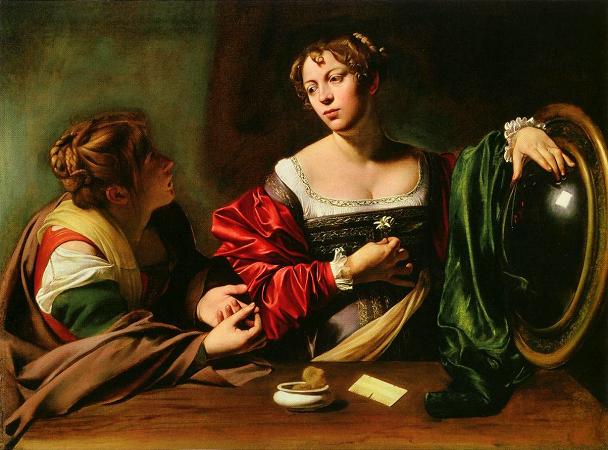Martha. Martha of Bethany is a biblical figure described in the Gospels of Luke and John. Together with her siblings Lazarus and Mary of Bethany, she is described as living in the village of Bethany near Jerusalem. She was witness to Jesus resurrecting her brother, Lazarus. The Aramaic form occurs in a Nabatean inscription found at Puteoli, and now in the Naples Museum; it is dated AD 5; also in a Palmyrene inscription, where the Greek translation has the form Marthein. In the Gospel of Luke, Jesus visits the home of two sisters named Mary and Martha. The two sisters are contrasted: Martha was cumbered about many things while Jesus was their guest, while Mary had chosen the better part, that of listening to the master's discourse. The name of their village is not recorded, nor is there any mention of whether Jesus was near Jerusalem. Biblical commentator Heinrich Meyer notes that Jesus cannot yet be in Bethany, where Martha and Mary dwelt. but the Cambridge Bible for Schools and Colleges claims that it was undoubtedly Bethany. As Jesus and his disciples were on their way, he came to a village where a woman named Martha opened her home to him. She had a sister called Mary, who sat at the Lord's feet listening to what he said. But Martha was distracted by all the preparations that had to be made. She came to him and asked, Lord, don't you care that my sister has left me to do the work by myself? Tell her to help me! Martha, Martha, the Lord answered, you are worried and upset about many things, but only one thing is needed. Mary has chosen what is better, and it will not be taken away from her.-In the Gospel of John, Martha and Mary appear in connection with two incidents: the raising from the dead of their brother Lazarus and the anointing of Jesus in Bethany. In the account of the raising of Lazarus, Jesus meets with the sisters in turn: Martha followed by Mary. Martha goes immediately to meet Jesus as he arrives, while Mary waits until she is called. As one commentator notes, Martha, the more aggressive sister, went to meet Jesus, while quiet and contemplative Mary stayed home. This portrayal of the sisters agrees with that found in Luke 10:38-42. In speaking with Jesus, both sisters lament that he did not arrive in time to prevent their brother's death: Lord, if you had been here, my brother would not have died. But where Jesus' response to Mary is more emotional, his response to Martha is one of teaching calling her to hope and faith: When Martha heard that Jesus was coming, she went out to meet him, but Mary stayed at home. Lord, Martha said to Jesus, if you had been here, my brother would not have died. But I know that even now God will give you whatever you ask. Jesus said to her, Your brother will rise again. Martha answered, I know he will rise again in the resurrection at the last day. Jesus said to her, I am the resurrection and the life. He who believes in me will live, even though he dies; and whoever lives and believes in me will never die. Do you believe this? Yes, Lord, she told him, I believe that you are the Christ, the Son of God, who was to come into the world.-As the narrative continues, Martha calls her sister Mary to see Jesus. Jesus has Mary bring him to Lazarus' tomb where he commands the stone to be removed from its entrance. Martha here objects, But, Lord, by this time there is a bad odor, for he has been there four days, to which Jesus replies, Did I not tell you that if you believed, you would see the glory of God?. They then take away the stone and Jesus prays and calls Lazarus forth alive from the tomb. Martha appears again in John 12:1-8, where she serves at a meal held in Jesus' honor at which her brother is also a guest. The narrator only mentions that the meal takes place in Bethany, while the apparently parallel accounts in the Gospels of Matthew and Mark specify that it takes place at the home of one Simon the Leper.
more...




